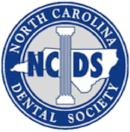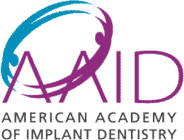
We all know the importance of proper oral hygiene and tooth care. Brushing and flossing in particular are daily activities that are foundational in supporting a lifetime of healthy teeth and gums. However, as with many things we do every day, it’s easy to get complacent about brushing and flossing and to fall into some lax or lazy habits. We all do some version of this when we’re in a hurry or just distracted, but it’s important to remember the role that brushing and flossing play in keeping our teeth healthy and to do them correctly more times than not. Let’s take a look at brushing and flossing and learn some tips for doing both correctly.
Firstly, let’s talk about timing. It’s best to brush your teeth at least twice a day, generally when you wake up and then again at bedtime. Brushing after each meal would help, but twice a day is the minimum. Most people benefit from a soft-bristled brush and fluoride enriched toothpaste, which helps strengthen the teeth. We should all floss at least once a day, and most dentists agree that before bedtime is the best time to do so. Combined with a healthy diet low in sugars and starches and regular trips to the dentist, these habits go a long way towards keeping your smile bright and healthy.
Brushing after meals is important, as it removes debris and bacteria and thus helps prevent plaque buildup. Flossing fulfills a similar role by helping to remove debris and bacteria from between the teeth and below the gum line, which works to prevent tooth decay and gum disease. However, if the meal has included acidic foods like tomato sauces, fruit juices, or sodas, it’s best to rinse the mouth out with water and then wait a bit before brushing. Acidic foods soften the outer layers of the teeth, and brushing immediately after consuming them can cause damage or excess wear and tear. Rinsing your mouth with water and letting the enamel harden again prevents this and ensures brushing has its full beneficial effect.
Now that we’ve talked about when and when not to brush and floss, let’s look at proper brushing and flossing techniques. Brushing your teeth should take between two and three minutes in total; in order to ensure that you’re taking enough time, it may be helpful to set a timer or check the clock. While there are a number of ways to approach brushing, this general technique should work in most cases:
- Place a pea-sized dollop of toothpaste on a damp toothbrush
- Hold the brush at a 45-degree angle to the gum line and brush in a circular motion with light to medium pressure.
- Start with the outside surfaces of the top teeth, then move on to the outside surfaces of the bottom teeth.
- When that’s complete, brush the top surface of each tooth, paying special attention to the molars in the back.
- From there, move on to brushing the inside surfaces of the upper teeth, then the inside surfaces of the lower teeth. Use the tip of the toothbrush to reach behind the front teeth both top and bottom.
- Take a moment and pay extra attention to the gum line, any crowns, fillings, or prosthetics, or any problem areas.
- Finally, brush your tongue to remove any bacteria and help prevent bad breath.
- Congratulations, you’re done!
Flossing is just as easy. The goal of flossing is to remove bacteria and debris from between the teeth and under the gumline, and the best way to accomplish that is like this:
- Remove between 18 and 24 inches of floss from the dispenser and break it off cleanly using the attached cutter.
- Wrap the ends of the floss around your index and middle fingers on opposite hands. Wind most of it around your middle fingers so that as you need new floss, you can wrap the used floss around your index finger and pull fresh floss from the other finger.
- Holding the floss tightly between the thumb and forefinger, guide it gently between the teeth. Avoid snapping the floss into place between the teeth as this can injure the gums.
- Curve the floss into a C-shape around the tooth and gently slide it back and forth, rubbing the sides of the tooth to remove bacteria and debris.
- Move the floss gently between the teeth and the gums to do the same, clearing and cleaning that area as well.
- Repeat for each tooth, top, and bottom. Don’t forget the backsides of your rear molars!
These instructions may seem detailed, but once you start brushing and flossing the correct way you’ll discover that it doesn’t take as long as you might think. Along with a healthy diet, proper brushing and flossing are daily habits that advance and preserve your oral health.
Good daily habits are augmented by regular visits to the dentist for exams and cleanings. If it’s time for you to see the dentist for a routine visit, or if you have something, in particular, you’d like to discuss, get in touch today. We’ll happily make an appointment and see what we can do to make your smile the best it can be!




